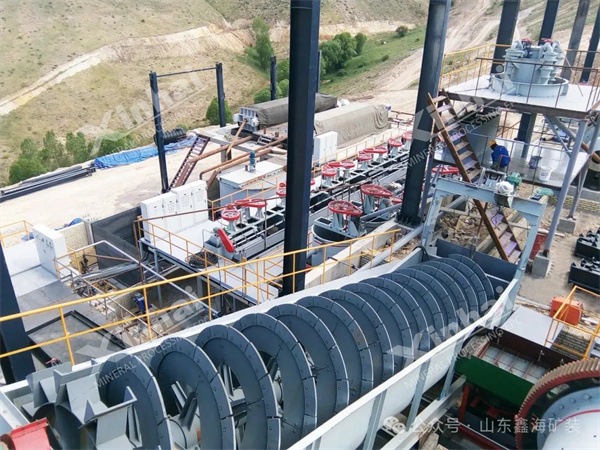If you want to know more information (such as product/process price, etc.), please contact us 24-hour telephone
In the iron ore mining sector, the desliming and concentration pre-treatment stage directly determines the final recovery rate of subsequent flotation and magnetic separation processes. As an EPCM+O service provider, we have developed third-generation intelligent equipment, the spiral classifier, which has become the core pre-treatment equipment in over 75% of concentrators worldwide through its unique centrifugal-gravity combined action mechanism. This article will systematically analyze its technical principles and efficiency enhancement schemes in line with the latest industry standards.
Using a Φ1500 mm spiral axis with a 25° inclination angle, the pulp forms a rotational flow speed of 0.8-1.2 m/s in the spiral groove (see Figure 1), through the following three-stage desliming mechanisms:
Primary Centrifugal Separation: Coarse particles with a density greater than 2.8 g/cm³ rapidly settle under centrifugal forces (reaching 5-8 G).
Secondary Hydraulic Classification: Fine mud (-200 mesh) is discharged from the overflow weir with the rising water flow.
Final Mechanical Interception: Special spiral blade spacing (150-200 mm) forms a physical barrier.
In an iron ore EPC project, optimized desliming systems reduced the mud content to less than 3%:
Dual Spiral Cooperative Operation: Two sets of Φ2000 mm spiral classifiers in series increased the processing capacity by 40%.
Intelligent Variable Frequency System: Automatically adjusts the speed (0.8-1.5 r/min) based on ore hardness (Mohs hardness f=12-16).
New Wear-Resistant Liners: High-chromium cast iron (HRC≥58) extends the maintenance cycle to 6,000 hours.

Using a submerged spiral structure (dam height ratio >0.8), the equipment simultaneously achieves:
Static Sedimentation Zone: A compressed layer forms at the bottom with a thickness of 0.3-0.5 m, achieving a solid concentration of 65-70%.
Dynamic Transport Zone: The spiral stably discharges underflow at a speed of 0.6-1.2 r/min.
Compared to traditional equipment, optimized concentration efficiency is increased by 2.3 times:
Stepwise Dam Design: Three overflow weirs (with a height difference of 15 cm) extend the pulp retention time.
Ultrasonic Assistance System: 28 kHz ultrasonic waves accelerate fine particle flocculation and settling.
Automatic Concentration Monitoring: Nuclear density meters provide real-time feedback (accuracy ±0.5%).
In a Chilean iron ore EPCM project, a "spiral classifier + hydraulic cyclone" integrated process was used:
Pre-Desliming Stage: Spiral classifiers remove over 80% of -325 mesh fine mud.
Concentration Enhancement Stage: Cyclones (Φ250 mm) increase the underflow concentration to 72%.
Intelligent Control System: PLC automatically adjusts equipment parameters based on feed quantity (200-350 t/h).
Actual operating data show that this scheme stabilizes the iron concentrate grade above 66.5%, reducing the processing cost per ton by $1.2.
Daily Inspection: Bearing temperature (<65°C) and lubricant level.
Monthly Inspection: Spiral blade wear (allowable value ≤10 mm).
Annual Overhaul: Main shaft concentricity correction (error <0.15 mm/m).
Through vibration sensors (monitoring range 0-20 mm/s) and current analysis modules, over 80% of mechanical faults can be warned 48 hours in advance.
| Model | Processing Capacity (t/h) | Power (kW) | Suitable Ore Hardness | Concentration Efficiency |
|---|---|---|---|---|
| FG-12 | 80-120 | 7.5 | f=8-12 | 65-68% |
| FG-20 (Recommended) | 180-250 | 15 | f=12-18 | 70-72% |
| FG-30 | 300-400 | 22 | f=16-20 | 73-75% |
Conclusion: As an EPCM+O service provider with 20 years of experience, we offer full-cycle solutions from equipment selection to intelligent transformation. Obtain customized mining schemes to break through the technical bottlenecks in your iron ore processing efficiency!